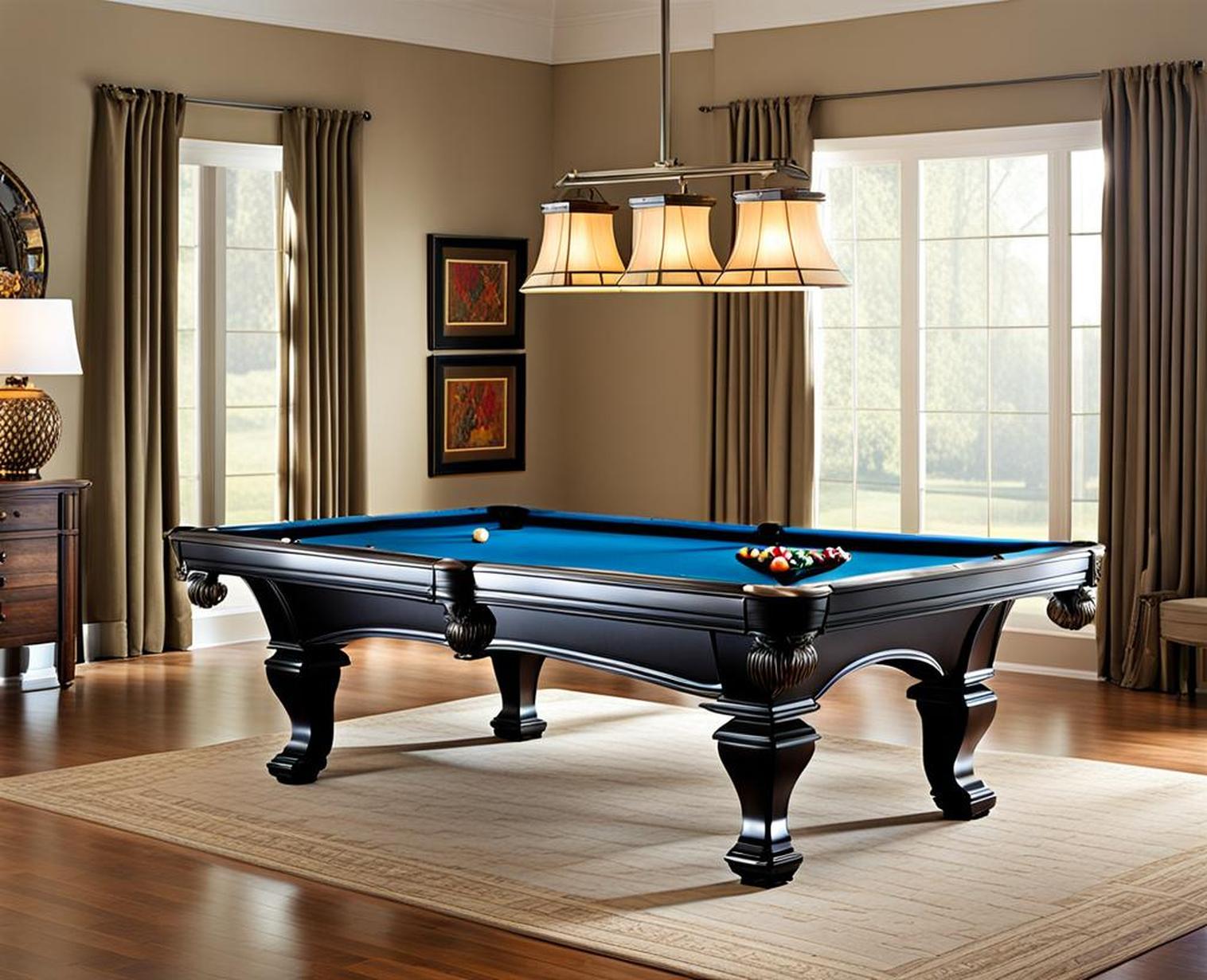For avid pool players, having the right equipment is essential. And when it comes to pool tables, size matters. While recreational players may enjoy a casual game on any table, professionals require adherence to strict dimensional standards. Regulation pool tables follow an official set of size specifications that govern major tournaments and competitive play.
But what exactly qualifies as a regulation pool table? You’ll learn the specifics around length, width, playing surface area, and more. We’ll also discuss how table size affects gameplay and equipment choices. Whether you’re an aspiring pro or just want that authentic billiards hall experience, read on to learn the ins and outs of regulation pool table sizes.
What Are the Official Dimensions for a Regulation Pool Table?
According to the Billiard Congress of America (BCA), regulation pool tables must follow a 2:1 ratio between length and width. The two most common regulation sizes are:

- 8 feet x 4 feet
- 9 feet x 4 feet, 6 inches
These strict dimensional standards ensure a consistent playing experience across different venues. The ample length also allows for full-length pool shots often required in competitive play.
Why Do Pool Tables Have Standard Regulation Sizes?
Regulation sizes serve several key purposes:
- Allow players to perfect skills and shots on a consistent playing surface.
- Provide enough space for long, full-table shots.
- Create a level playing field for competitive and tournament play.
- Standardize professional equipment across different pool halls and venues.
Much like official sizes in sports like basketball or tennis, regulation pool tables enable players to master the game based on standardized equipment dimensions. Players can hone techniques knowing that any regulation table will play the same.
What Pool Table Sizes Are Available Besides Regulation?
While 8-foot and 9-foot regulation tables are ideal for pros, several smaller table sizes work well for recreational play:
- 7-foot tables – Compact size for smaller recreation rooms.
- 8-foot tables – Versatile mid-size home option.
- 9-foot tables – Large for home use but smaller than regulation.
These popular non-regulation options allow casual play in limited spaces. However, their dimensions vary, so gameplay and strategies differ from regulation tables. Shot lengths and angles change based on the table size.
How Does Table Size Affect My Pool Cue Length?
Pool cue length should match the table size for optimal play:
- On regulation tables, the standard cue length is 58 inches.
- On home tables under 8 feet, a shorter 48-inch “shorty” cue helps avoid collisions.
- Too long of a cue on small tables can hinder shooting technique and mobility.
Serious players may want to invest in both a regulation cue and a shorty for versatility across different table sizes.
What Other Specs Define a Regulation Pool Table?
Beyond the playing surface size, other table elements must meet strict standards for regulation play:
- Table Height – Between 29.25 and 31 inches.
- Slate Thickness – At least 1 inch thick for stability.
- Rails – Must be 4 to 7.5 inches wide.
- Pockets – 4.25 inches diameter, 2.5 inches deep.
These specifications combine with playing area dimensions to enable smooth, professional-level play.
What Are the Benefits of Choosing a Regulation Table?
Here are some top perks of buying a regulation-sized pool table:
- Authentic professional playing experience.
- Consistent dimensions for practice and skill-building.
- Space to execute full table shots.
- Adheres to tournament equipment standards.
- Brings an impressive, upscale billiards aesthetic into your game room.
While regulation tables require more space, their official tournament-approved size offers an unparalleled playing and training experience for dedicated players.
How Can I Fit a Regulation Table in a Small Home Game Room?
Getting a 9-foot regulation table to fit inside a residential space can be tricky, but it’s doable with some creativity:
- Carefully measure the room and design the layout to accommodate the table.
- Use folding tables and Murphy beds to maximize usable floorspace.
- Build a multi-purpose room with flexible furnishings to adapt around the pool table.
- Make the table the focal point and arrange seating and decor around it.
With smart planning and a willingness to compromise on other furnishings, pool enthusiasts can enjoy regulation gameplay from the comfort of home.
When it comes to pool table sizes, regulation dimensions set the standard for professional play. Whether you’re an aspiring pro or just want an authentic billiards experience, understanding regulation measurements is key.
While 8ft x 4ft and 9ft x 4.5ft tables are best for tournaments and honing skills, smaller 7ft to 9ft tables work well for recreational play. Just be mindful of cue length and shot lengths on non-regulation tables. With some creative space planning, you can enjoy all the perks of a regulation table right at home.
